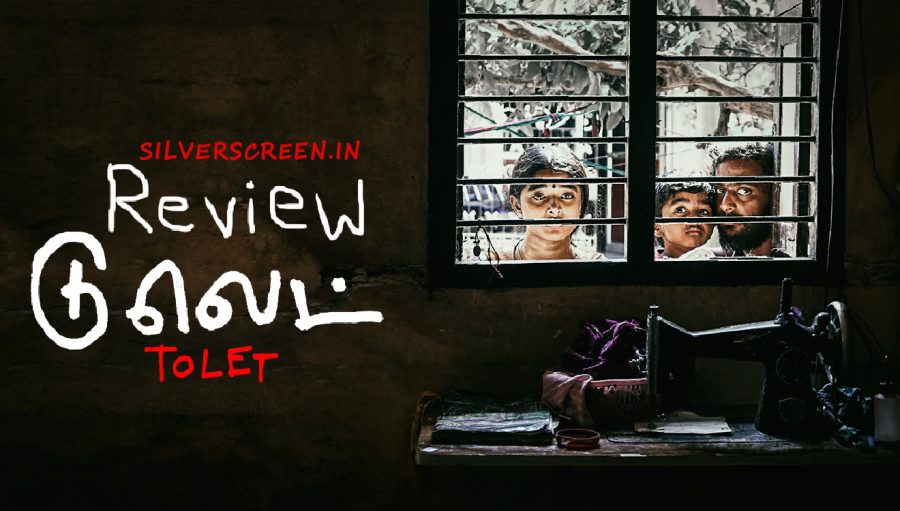Director: Chezhiyan
Cast: Santhosh Sreeram, Sheela Rajkumar, Aadhira Pandilakshmi
In Chezhiyan’s To Let, doors don’t readily open for the couple – Ilango (Santhosh) and Amudha (Sheela Rajkumar) – and their only child – Siddharth (Dharun). Questions are asked of them even before they’ve laid their hands on the gate. “Are you vegetarian?” “Where do you work?” “What are you?” When an elderly landlord with an ash smeared forehead asks the third question, Ilango fora split second is unable to register the exact import of that statement. Ilango’s friend who has accompanied him on this house hunting ordeal places a hand on Ilango to signal that he need not reply, and he proceeds to give an answer that won’t result in them being asked to leave. If that’s not a deal breaker, it is Ilango’s occupation. A scene in Siddharth’s school has him struggling to complete the sentence “My father is a …”. He is a writer trying to find his way into cinema while dabbling in everything from commercials to dubbing. A friend jokes that people connected to cinema aren’t welcome as tenants but they sure are welcome as state leaders and laughs at the irony.
The impact of caste and class pervades every frame of To Let, and every form of abuse it inflicts can be found in the film. The abuse on part of Ilango and Amudha’s current Hindu landlord, the house brokers and owners asking about their caste or their food habits being the primary roadblock. It’s clear why Ilango refrains from dealing with the current landlord (who lives, literally, above them), it’s always Amudha who must run up to every whim and fancy of the woman in that household. There are hints of their marriage being inter-caste, inter-religious (only Amudha prays and follows Christianity) with all ties to the respective families cut off with Ilango probably from a Dalit background. Their union has of course produced a child named after Buddha’s birth name. Even Amudha must keep her head down while talking to the landlady and the landlady rarely ever looks at Amudha in her eye. One instance when she needs to look at her, she is wearing a face mask! To Let is written and filmed in almost cinema vérité style by Chezhiyan, the camera never overbearing and with zero use of background score to nudge you along. While the doors rarely open for them, the landlady opens their doors up for every potential new tenant to look within and this is one of the most moving montages of To Let. We only see the latches coming undone, the fans constantly running and Amudha under duress for she must be hospitable even when just stepping out of her bath.
Privacy and the struggle for space is another aspect that To Let elaborates on. We see women hanging clothes to dry in full length of a small opening with a man reading newspaper and three kids crammed on the stairs trying to study. Chezhiyan makes the interiors seem as claustrophobic as possible. To Let is set in 2007 and the man with the newspaper reads out an item about astronaut Sunita Williams having completed the Boston Marathon in space, running on a treadmill for four hours. This occurs on April 16, 2007 and the couple in To Let need to vacate their current home by May 4. Chezhiyan has turned this piece of fact into cheeky allegory, a woman in ever expanding space running a marathon while staying in place and on Earth, Amudha and Ilango living the nomadic lifestyle in a bid to find an inch of space to rest in. Some claustrophobic homes require traversing a cul-de-sac and others use common bathrooms with an instruction to keep the television volume at a minimum. Even the exterior locations in To Let are tiny lanes and nondescript streets.
Recommended
In To Let, empathy rests within and for the subaltern. In a scene, we see an owner promising to make a house available in seven days. When Amudha looks inside through a window, she sees an old couple with deteriorating health. She walks away. The scene is similar to another Tamil film – Balu Mahendra’s Veedu – where people with empathy for its protagonists who are struggling to build a house belong to the labour force employed at the ground, beginning with Mangamma. Chezhiyan’s film opens with a note on how the IT boom in Chennai caused a hike in real estate prices and rents being jacked up with people willing to pay more rent and therefore a class of society finding itself unable to afford housing anymore. Veedu came out in 1988 and To Let works like an upgrade on Balu Mahendra’s film for a post-liberalization era. The 2007-set film is informed by past and present where socio-economic disparities have only grown larger. One can even say it is informed by the film’s future – the present times – when there is a strong reinforcement of caste and majoritarian identity.
*****
The To Let review is a Silverscreen original article. It was not paid for or commissioned by anyone associated with the movie. Silverscreen.in and its writers do not have any commercial relationship with movies that are reviewed on the site.



